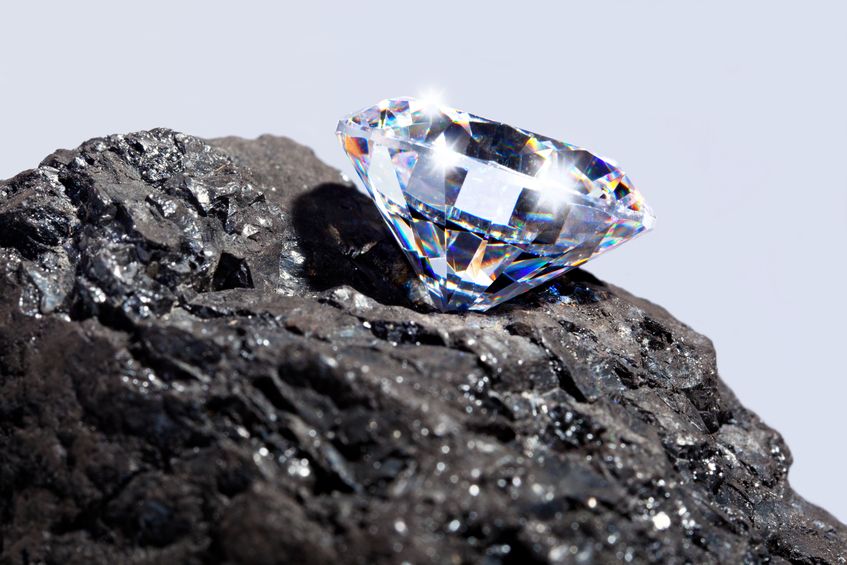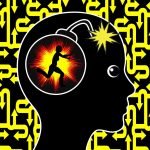Joseph Kellerstein, DC, ND
This is a story about process, not result. I just took the case yesterday in front of a 3rd-year homeopathy class here in Toronto. I have no idea as to the result, but feel that the process I worked through might have teaching benefit, so I want to share this with you.
The Case
Sharon, a pleasant 24-year-old student, presented with a chief complaint of headaches (described as migraines, due to their intensity and one-sidedness). The headaches had been present in some form since the age of 8 years. There was no identifiable illness or emotional trauma preceding their onset, although her parents had divorced when she was 4 years old.
The headaches were primarily located at the bridge of the nose (the patient identified the root of the nose as being the sight of pain over 60% of the time – the only clearly identifiable location). On questioning, Sharon informed us that they might occur once or twice a month, especially just before or during menses.
The headaches were better from cold application. (I carefully attempted to differentiate amelioration from cold application from amelioration from numbing with ice.)
They were slightly better from pressure applied at the root of the nose. The most relief came from resting in a dark room.
In trying to respond to my question as to “when” the headaches might seem worse (in terms of either time or context), she struggled and replied, “not mornings, but perhaps sometime in the afternoon.”
What to Go On?
From a case-taking perspective, this lack of spontaneity – ie, her tentative responses, and only after questioning – was not encouraging, yet something about it was “nagging.”
I decided to leave that last question alone for the time being, and re-pursue amelioration. What are the things that clearly provide good relief?
“Dark and cold.”
It went no further. Again I decided to stop pressing the issue, despite some dissatisfaction. My hope was that gradual exploration of her whole state might ultimately be more productive. It often is.
A More General Exploration
So, in the process of homeopathic case-taking (facilitating), we explore in detail the altered sensation and function first associated with all complaints. Following this, we explore any changes in the “general state,” hoping for more peculiar indicators of a remedial diagnosis or further understanding of this person, so as to improve case management and detection of hygienic issues (those aspects of illness due to poor lifestyle).
In exploring this patient’s “general state,” I asked Sharon the thermal/weather panel of questions I include in a routine screen. She revealed that on a recent trip to the Bahamas she was careful to not go out much until sunset – a time of day she absolutely loved there.
Kent tells us to explore and come to know a person’s loves and hates.
I asked “What is so good about sunset?”
She responded, “It is beautiful.” I then asked “What about the heat and light of the sun during the day?” (I was recalling her previous hint about the afternoon and her headaches.) She then expressed that she has a strong sensitivity to both the heat and light of the sun, especially the afternoon sun when it is strongest, and that she just feels much more comfortable at sunset.
Now the stage was set. “Is there a relationship between the different phases of the sun and your headache?” Sharon responded after some consideration… The headaches were there in the morning but were not bad until the sun’s intensity grew. Simultaneously, the headache would also grow, and marked relief would occur with sunset.
Wow! I had always read about this symptom but never actually heard a patient sculpt it out for me.
Easing Into Specifics
I think that is one of the most important points here. Almost instinctively, I had felt a faint glimmer of a reliable symptom at the beginning of the case, but not wanting to ask direct questions, I waited for a second opportunity during the general case.
True, it is a well-known keynote of a small group of remedies. However, the lesson is this: the more you have studied the Materia Medica, the more possibilities emerge for identifying “a diamond in the rough.”
The next complaint was “anxiety.” Asking her to elaborate about her anxiety was not so fruitful, in terms of specific symptomatology. I tried to somaticize the feeling, as sometimes this helps.
“When you say anxiety, what do mean?”
It was described as a feeling of tension, and I noted that the patient instinctively put her hand to her abdominal region. Seeing that she had implied a location, I asked for confirmation. “Does that anxiety/tension have a location?” She confirmed that it was the “stomach” (umbilical) area.
“Give me an example of that anxiety when the tension in the stomach is at its worst.” Sharon immediately went to situations involving her mother. After more questioning she described it as, “I open up to my mother and she does not support me as she should. It makes me feel sorry that I did open up, so I close up.”
Asking for more examples, I saw that though it was mostly her mother, it was also her friends – that if they gave the impression of not paying sharp attention or caring about what she was expressing, she would experience a strong hurt.
I asked what was important about people giving the impression of really caring about what she said, as in each word. It seemed to come down to issues of vulnerability and hurt. “I want deep relationships. I want to know whether I can open up, or whether this person is just an acquaintance.”
Coming Into View
Now I was starting to feel good about the case… I felt that it was unfolding.
Related to anxiety she told me about an old symptom that had recently emerged. As a child, she often felt a strong fear when going to sleep. Recently, she had some recollection of this old anxiety, and reasoned that it was a fear of death before sleep because her father had gone to sleep and suffered a medical emergency.
She had a general craving for junk food, especially salty and greasy. She had a premenstrual craving for salt, less so for sweet.
This past year she had suffered 3 bouts of tonsillitis. During each bout, the tonsils swelled to the point of touching each other. The throat pain was worse with warm drinks.
Repertorization
According to the rep chart (Figure 1), Natrum muriaticum seemed strongly indicated.
The headaches rising and falling with the sun is a classic symptom of the remedy. I did initially neglect a symptom that I disqualifed. Sharon had said that her headaches were made about 50% better by coffee, but much better by coffee plus an anti-histamine pill (80%). I had felt that 50% might be equivocal, so I left it out. Coffee ameliorating either a headache or ameliorating, in general, for Nat mur, is not in the complete repertory (4.5); however, in Allen’s, we find it:
Allen: Headache, in the morning (after smoking), lasting all the forenoon, and only disappearing after dinner and drinking coffee (thirteenth day).
Hering: Headache from sunrise till sunset, worse at midday, right eye congested, worse from light.
And here are the mind symptoms:
Allen: His mind is very much affected by a conversation…
Always in his thoughts he seemed to seek for past unpleasant occurrences, in order to think them over, making himself morbid…
She takes everything in bad part, and weeps and cries much…
Affronts that he had given and received were constantly in his mind, and he could not free himself from them; this put him still more out of humor, and he had no real interest in anything (second day).
Hering: He concluded from the look of everyone, that he was pitied on account of his misfortune, and he wept…
Taciturnity, offended at every word, avoids company, hates persons because they have offended him, spleen.
Treatment
The decision was made to begin with a single dose of Nat mur 200C (3 pellets). If no response with a week, the dose should be doubled (3 pellets morning and evening of the same day).
It does feel right. Let’s see and look forward to learning more.

Joseph Kellerstein, DC, ND, graduated as a chiropractor in 1980 and as an ND in 1984. He graduated with a specialty in homeopathy from the Canadian Academy for Homeopathy, and subsequently lectured there for 2 years. He also lectured in homeopathy for several years at CCNM; for 8 years at the Toronto School of Homeopathic Medicine; and for 2 years at the British Institute for Homeopathy. Dr Kellerstein’s mission is the exploration of natural medicine in a holistic context, especially homeopathy and facilitating the experience of healing in patients.





